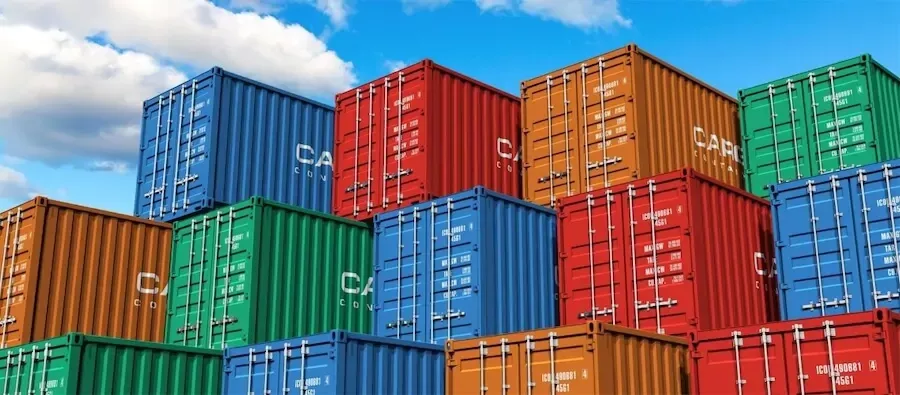
Container stack at sea port | © Oleksiy Mark, Shutterstock
If you have made any major purchases in the last two years, it’s likely that you have personally felt the impact of the global supply chain crisis. Pandemic-induced spikes in consumer sales and labor shortages triggered artery-clogging nightmares for some of the world’s busiest ports. At the most serious end of the spectrum, this has contributed to food shortages. But maritime backlogs can delay the delivery of everything ranging from clothes to couches to cars.
More than four-fifths of global merchandise trade (by volume) is carried by sea, and container trade has been growing at a faster rate than global GDP itself. How the maritime sector performs, as we have seen over the course of the past two years, is vital for international trade. Whenever there is friction in the maritime sector, it translates very quickly to shortages on shelves.
Maritime ports are a key element in the cost of international trade for any country. Unfortunately, in many of the client countries of the World Bank, the "port" does not facilitate trade as much as impede it. The newest Container Port Performance Index, produced by the World Bank and S&P Global Market Intelligence, helps understand which ports are performing well and which ones could benefit from improvements. The index measures 370 ports around the globe based on the time vessels needed to spend in port to complete workloads and ranks them to determine which of the world’s ports are the most efficient.
In 2021, Ports in the Middle East took four of the top five spots, responding very well to the heavy volume growth and service volatility caused by impacts of the global pandemic . In particular, King Abdullah Port in Saudi Arabia topped the rankings after increasing its container volume by 31% in 2021. Its rapid growth and its consistent efficiency provides some interesting cues for other countries looking to improve how well their ports perform.
King Abdullah Port is the region’s first port to be owned, developed, and operated by the private sector. Partnerships with well-known companies such as Maersk and others have enabled investments in the port’s infrastructure and technology. Recent upgrades such as the creation of an e-portal for entry permits, 24-hour X-ray inspection capabilities, petrochemical warehousing, efficient links to land transportation and the world’s deepest berths for giant container ships.
While this success is not easily replicable, it is important for more ports to harness the power of digital technology. Doing so would boost the performance of the maritime sector and help address many of the critical challenges it is currently facing.
The creation of an efficient digital ecosystem would go a long way in streamlining operations and facilitating the exchange of data between shipping lines, port services, cargo handling operations, clearance agencies, and with other transport networks.
Many developing countries can start climbing the ladder of digital transformation by standardizing documentation through a Maritime Single Window. Next, introducing a Port Community System and Port Management System, which help optimize, manage and automate logistics such as vessel traffic, cargo, inspections, permits and even waste.
Looking at the 2021 CPPI Rankings, we see several upper- and lower-middle income countries’ ports listed near the top of the rankings. Several of these have recognized the importance of digital modernization and invested in these improvements. For example, Morocco’s Tangier-Mediterranean Port, for instance, ranked 6th. Since established in 2007, Tangier-Mediterranean has become the largest port in the Mediterranean by adhering to international standards and working to improve efficiency in port and vessel operations, traffic management, port cyber security and IT data exchange and information.
Following a modernization plan of several hundred million dollars, Cartagena Port in Colombia ranked 12th in the CPPI, making for another notable story. The port offers digitized, real-time information through a virtual tool as well as an electronic data interchange, automated authorizations and smart container delivery.
The World Bank works with our client countries to improve their trade environments, and port performance is a key part of this. With the CPPI, we aim to inform national governments, port authorities and operators, supra-national organizations, and other public and private stakeholders engaged in trade, logistics and supply chain services about what it takes to become a top-performing port. Based on this information, we can advise our client countries how they can modernize their ports, such as through efforts to digitize processes.
The efficiency gains achieved by using digital technology are evident through the CPPI. But what the index doesn’t show is that better-coordinated use of digital technology would also result in safer and more resilient supply chains, and lower emissions. All these factors are important for our client countries, and we hope that the information conveyed through the CPPI results will encourage progress toward digital transitions at ports.


